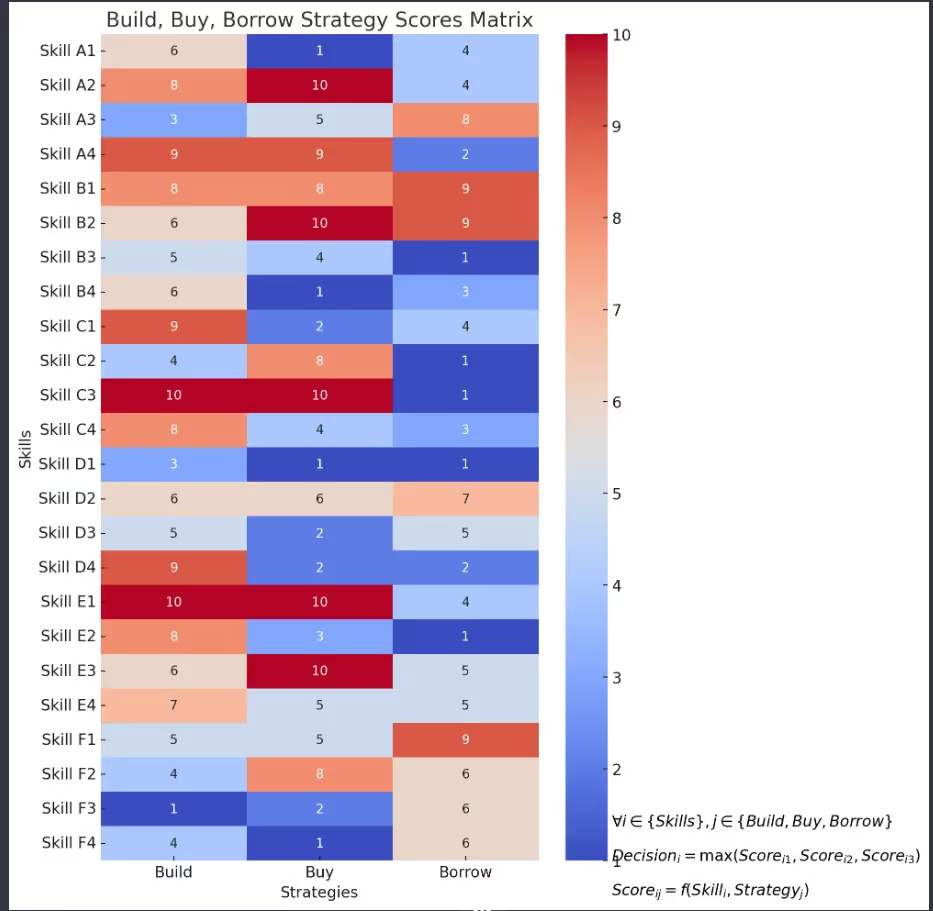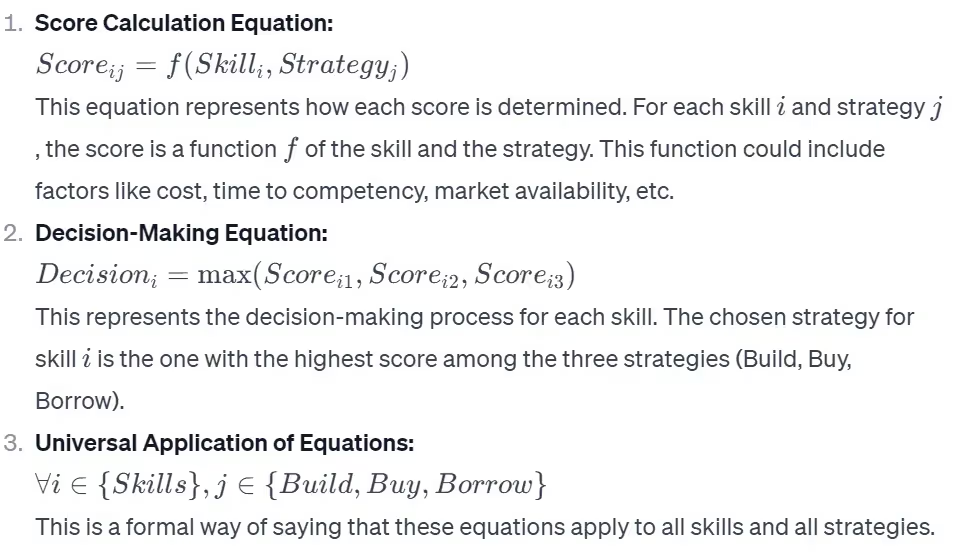Sources of Skill Identification: Insights for Global Talent Leaders
This week, I had the opportunity to engage with various global leaders to discuss enhancing the role of Workforce Planning and Recruitment in our organization. Specifically, we explored how these functions can transition from executing orders to adopting a more advisory role, particularly in identifying the skills we need to develop. The discussions yielded some promising opportunities for this strategic shift.
We specifically discussed the sources through which new skills can be identified.
- Monitoring Changes in Vendor Products: Companies can assess the evolving skill requirements by keeping track of updates and new features in the products and services they purchase from vendors. This includes understanding new technologies, processes, or methodologies introduced in these products, which might necessitate new skills or knowledge for optimal utilization. (API Development skills, Cloud Integration skills, and Data Dictionary skills can be understood through this)
- Skills Impacting Productivity: Identifying which specific skills contribute most significantly to productivity can help companies focus their training and hiring efforts. This involves analyzing internal data to see which competencies and knowledge areas correlate with high performance and efficiency. (PowerBI, Project Management, Collaboration, and Copilot skills will become obvious through this lens)
- Industry-Specific Trends: In sectors like retail, staying abreast of industry-specific trends is crucial. For instance, in adaptive retail, which involves tailoring the shopping experience to individual customer preferences and behaviors, understanding evolving trends like personalization, digital engagement, and data analytics becomes key. Companies need to identify skills that align with these trends.
(Personalization, Experience enhancement, and advanced CRM skills will become evident through this) - Risks Highlighted in 10K Statements: Public companies are required to disclose risks in their 10K filings. Companies can identify skills needed to mitigate these risks by examining these statements. This could involve understanding regulatory changes, cybersecurity threats, market shifts, and other challenges requiring specific expertise. (AI Ethics, Cybersecurity, Regulatory changes, and other similar skills will become evident through this)
- Startups Disrupting the Ecosystem: New entrants in the market often bring innovative approaches and technologies. By analyzing how startups disrupt their industry, established companies can identify what new skills they need to compete or collaborate effectively. This might involve adopting new technologies, business models, or operational strategies. (you may have the skills, but startups may apply the Skills to workloads differently. It will be critical to capture the same. For example, when Warby Parker disrupted the prescription lens industry, they focused on “Home Try On” as a workload that translated to multiple skills.
- Academic Institutes with Specialized Focus: As discussed in previous emails, there are several skills that academic focus institutes for Design and Quantum computing
We can then develop a model across Build, Buy, and Borrow Strategies.


High Score (e.g., 10) in ‘Buy’:
- Ease of Acquisition: The skill is readily available in the job market, making it easier to find and recruit candidates with this skill.
- Cost-Effectiveness: Hiring someone with the skill might be more cost-effective than developing it internally.
- Immediate Need: The skill is urgently needed, and hiring may be the fastest way to acquire it.
- Strategic Fit: It aligns well with the company’s strategic objectives and the specific role requirements.
Low Score in ‘Buy’:
- Conversely, a lower score would suggest difficulties in hiring for this skill due to factors like scarcity in the job market, high cost, or longer timeframes needed for recruitment.










.svg)




















.svg)





.svg)
